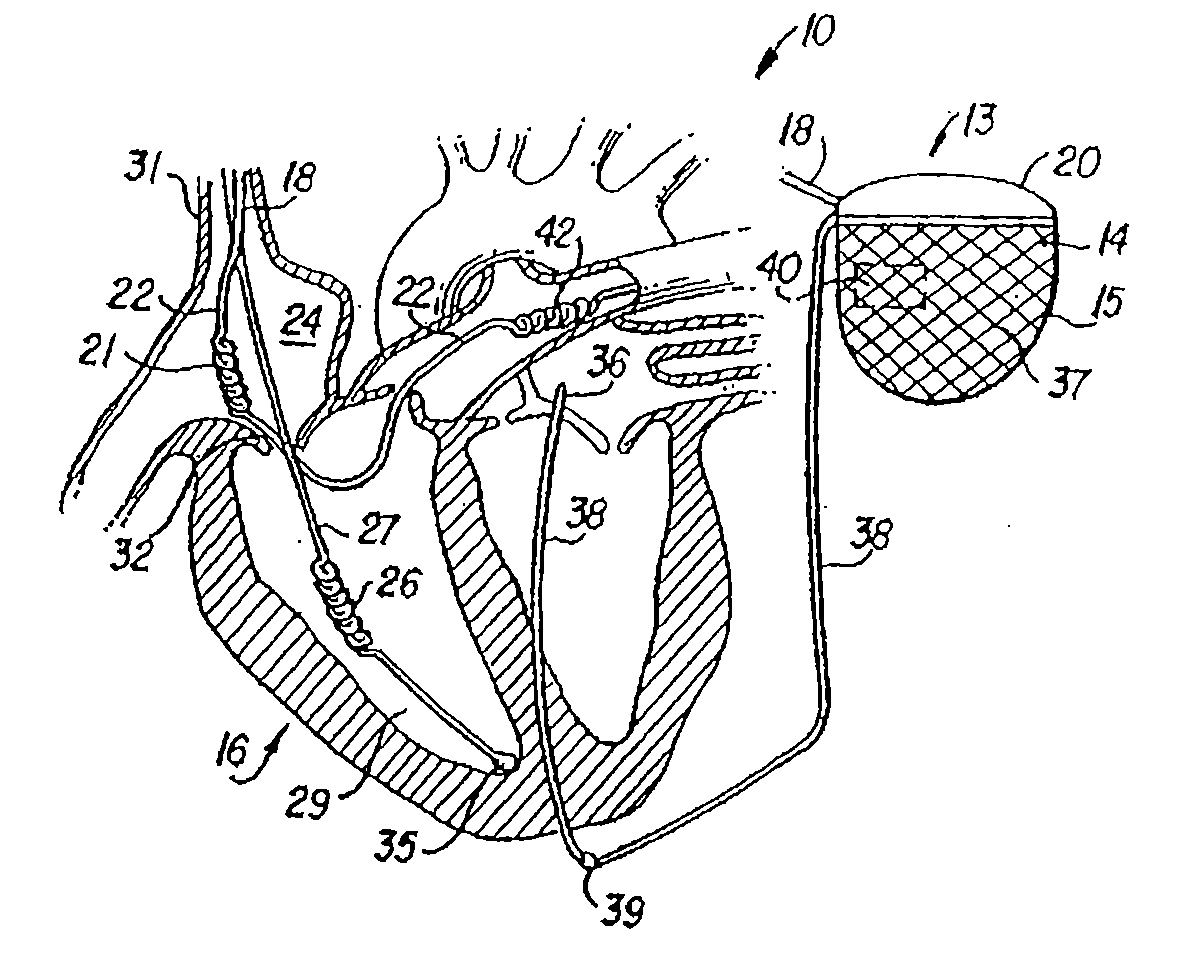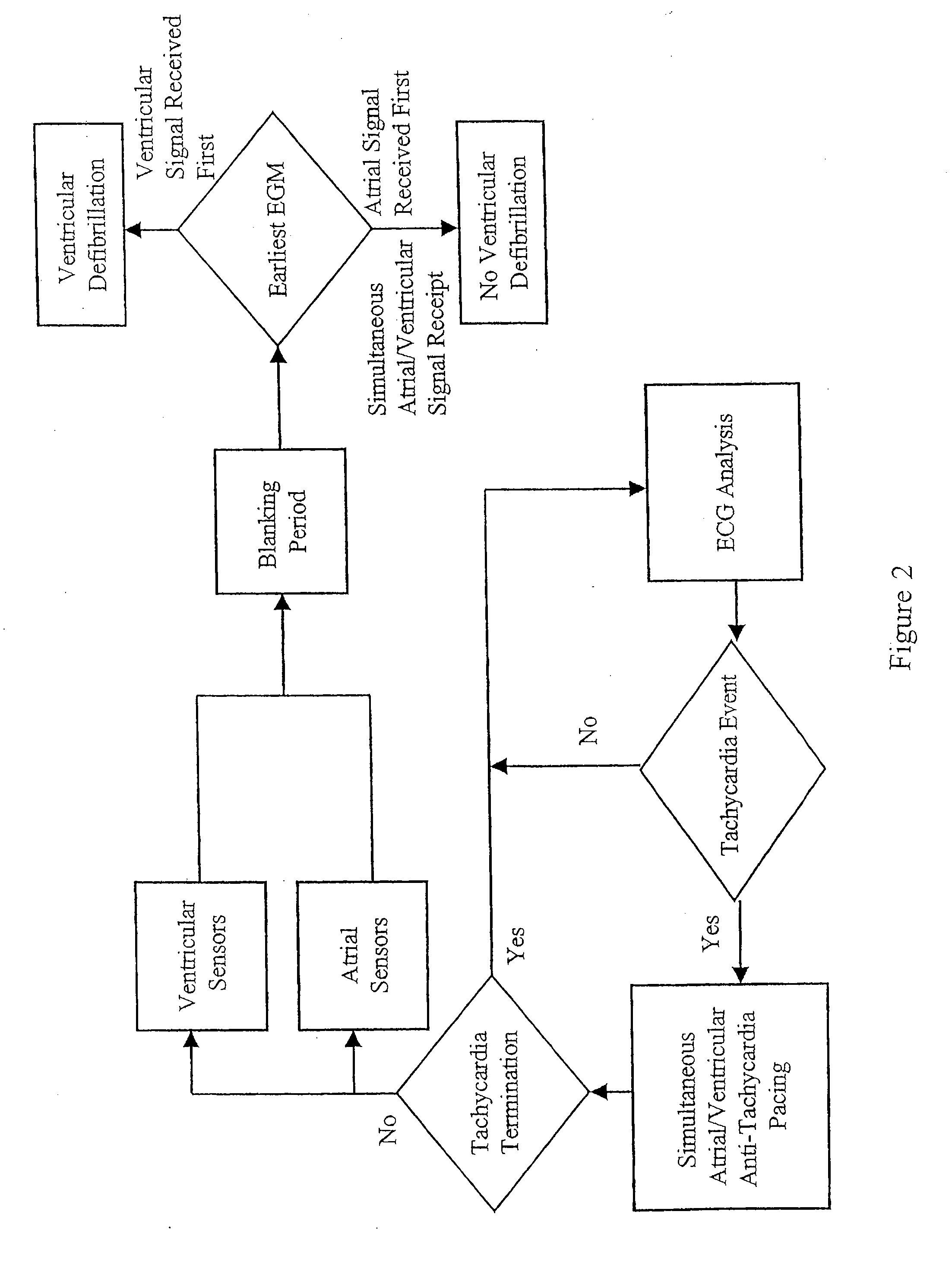Automated Assessment Of Atrioventricular And Ventriculoatrial Conduction
a technology of atrioventricular and ventriculoatrial conduction, applied in the direction of therapy, heart stimulator, heart defibrillator, etc., can solve the problems of generating a huge financial burden on the health system, delivering often inappropriate shocks for supraventricular tachycardia (svt), and early icd battery depletion
- Summary
- Abstract
- Description
- Claims
- Application Information
AI Technical Summary
Benefits of technology
Problems solved by technology
Method used
Image
Examples
example i
Anti-Tachycardia Pacing Responses in Patients Exhibiting Supraventricular Tachycardia and Ventricular Tachycardia
[0163]This example provides data collected during an electrophysiological testing study demonstrating the effectiveness of anti-tachycardia pacing bursts in patients exhibiting SVT or VT.
[0164]A total of twelve patients (three female and nine male) were tested having a mean age of 61+−19 years. A summary breakdown of the patients by characteristics and response to anti-tachycardia pacing for patients is shown in Table 1 below:
TABLE 1Summary Patient Data For Electrophysiological Testing StudySVTVTNumber of Patients84Age (years)59 + / − 2165 + / − 16% Female370Left Ventricular Ejection Fraction (%)52 + / − 11 32 + / − 10*% Having Cardiac DiseaseNone750CAD25100Reason for Electrophysiological StudySVT40VT04Other (syncope, palpitation etc)40Number of ATP bursts per patient6.0 + / − 4.18.7 + / − 4.7% Termination per paient44 + / − 3317 + / − 22*p
[0165]The combined average left ventricular eje...
example ii
Anti-Tachycardia Pacing in an Experimental Mouse Model
[0176]This example demonstrates that the mouse may be utilized as an experimental model to study earliest arriving electrical activities following anti-tachycardia pacing to identify the source of cardiac tachycardia.
[0177]Female FVB mice were anesthetized with xylazine and ketamine (IP) coadminstered with propranolol to reduce the intrinsic heart rate. Under a Nikkon surgical microscope, a 1.7 French octapolar catheter (NuMed Inc., Hopkinton, N.Y.) was introduced through the right jugular vein coursing into the right atrium and right ventricle of the mouse. The electrode spacing on the catheter tip is 0.5 mm and the electrode thickness is 0.5 mm. A six lead surface electrogram was obtained from the mouse by placing one subcutaneous electrode into each limb of the mouse, for a total of four. The surface electrograms were filtered at 0.01 Hz to 100 Hz, and intracardiac signals sampled at 1 KHz, amplified and filtered at 30 to 500 ...
example iii
Automated Assessment of Atrioventricular and Ventriculoatrial Conduction
[0185]Two separate research studies are currently being designed to test embodiments contemplated by the present invention. The first study is directed towards an acute research protocol in an electrophysiology (EP) laboratory. The second study involves a chronic protocol that requires follow-up studies on patients for up to a year.
Acute Protocol
[0186]Patients presenting to the EP laboratory for EP testing or ablation will undergo assessment of AV and VA conduction by pacing the atria and ventricles, respectively, at baseline and then after administration of adrenergically-stimulating agents such as isoproterenol and epinephrine. The minimum cycle length (CL) of pacing under these conditions that results in 1:1 conduction to the opposite chamber will determine the minimum AV and VA Wenckebach CL (min AVW and min VAW, respectively).
[0187]Patients will then be induced into ventricular (VT) or supraventricular (SVT...
PUM
 Login to View More
Login to View More Abstract
Description
Claims
Application Information
 Login to View More
Login to View More - R&D
- Intellectual Property
- Life Sciences
- Materials
- Tech Scout
- Unparalleled Data Quality
- Higher Quality Content
- 60% Fewer Hallucinations
Browse by: Latest US Patents, China's latest patents, Technical Efficacy Thesaurus, Application Domain, Technology Topic, Popular Technical Reports.
© 2025 PatSnap. All rights reserved.Legal|Privacy policy|Modern Slavery Act Transparency Statement|Sitemap|About US| Contact US: help@patsnap.com



